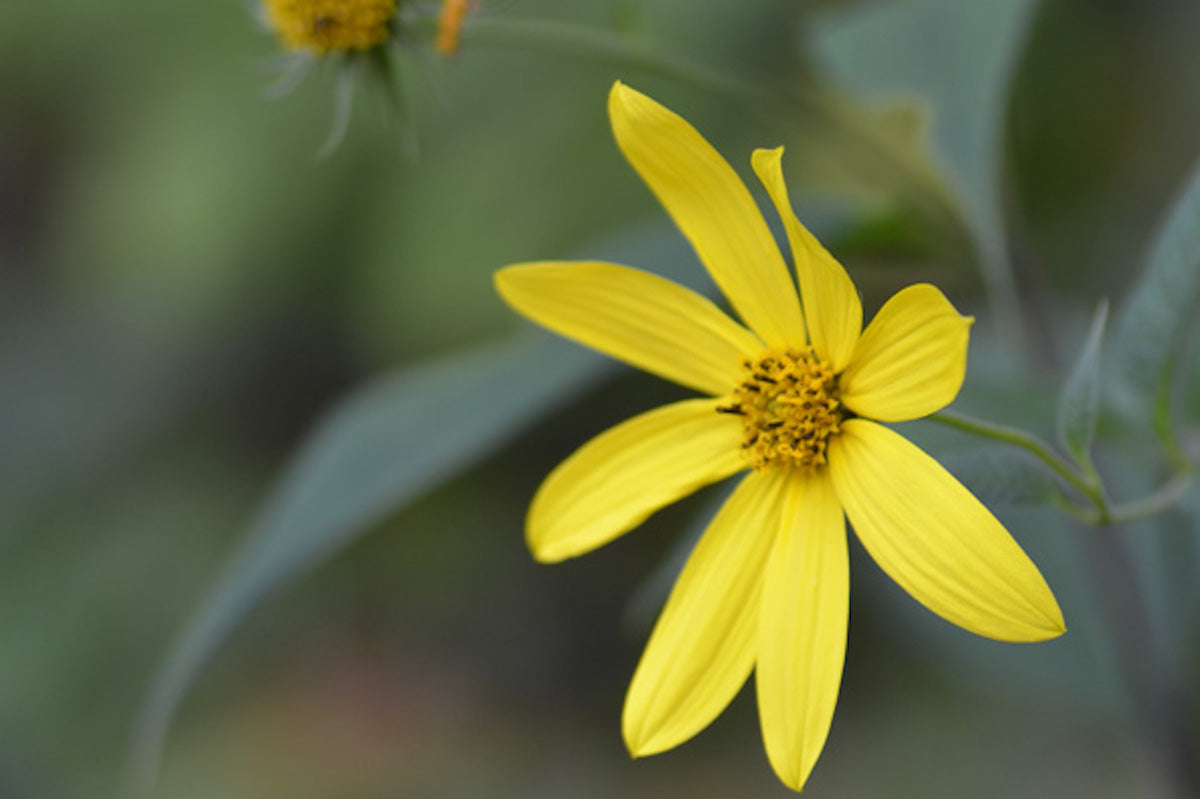Helianthus decapetalus
Approx. 0.5 litre pot
About this cultivar:
Helianthus decapetalus is a perennial known by the common name thinleaf sunflower. It is native to the Eastern and Central United States and Canada. There can be quite a lot of variation in the height, vigour, and size of flowers!
In its native environment it grows in habitats such as floodplain forests and riverbanks. The flowers attract many kinds of insects, including bees and butterflies and the seeds even provide a source of food for birds. Great for tough spots.
The name decapetalus means "with ten petals", referring to the 8-12 ray florets on the flower heads, resembling petals. I score this plant deca out of deca.
- Position: Full sun, partial shade
- Soil: Almost any soil, grows well in Ballyrobert
- Flowers: July, August, September
- Other features: Grows well in Ballyrobert, Bees and Butterflies, Cut Flowers or Dried Flowers
- Hardiness: H5 - Hardy in most places throughout the UK even in severe winters (-15 to -10°C), Fully hardy - grows well in Ballyrobert!
- Habit: Clump forming, Columnar or Upright
- Foliage: Deciduous
- Height: 105 - 135 cm (3.5 - 4.5 ft)
-
Spread: 75 - 105 cm (2.5 - 3.5 ft)
- Time to full growth: 2 to 5 years
- Plant type: Herbaceous Perennial
- Colour: Green, yellow
- Goes well with: Another Helianthus cultivar or tall grasses like Miscanthus. Late flowering Aconitums. Daisies like Aster. Perhaps even Knipfohia.
About this genus:
Helianthus (he-le-an-thus) from Greek helios (the sun) and anthos (flower), commonly known as the sunflower! Widespread natives to the America's that are primarily summer and autumn flowering perennials. Almost without exception, Helianthus blooms are yellow-flowered daisies.
Helianthus species are native from drought-prone prairies to boggy swamps and are renowned for their durability and adaptability. They are tough, low maintenance plants which makes them perfect for any garden. They'll grow almost anywhere that isn't a pond or full shade. The perennial Helianthus range from tall, back of the border plants to short front border specimens that really light up any garden. They have a reputation for being childish and in bad taste; I don't give a ****! - That reputation might even be why I like them so much! I often toy with the idea of collecting all 70 of the species...
Helianthus flowers look amazing when the setting autumn sun shines through them...many insects agree and can't stay away. For non-insect companions try another Helianthus cultivar or tall grasses like Miscanthus. Late flower Aconitums. Daisies like Aster.Perhaps even Knipfohia.




